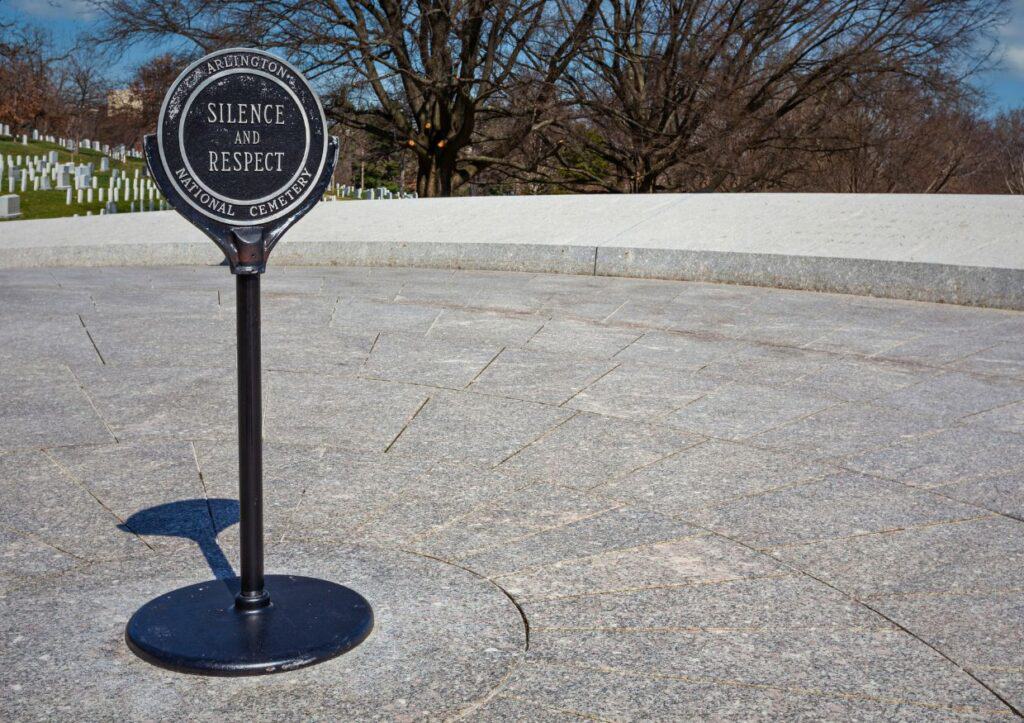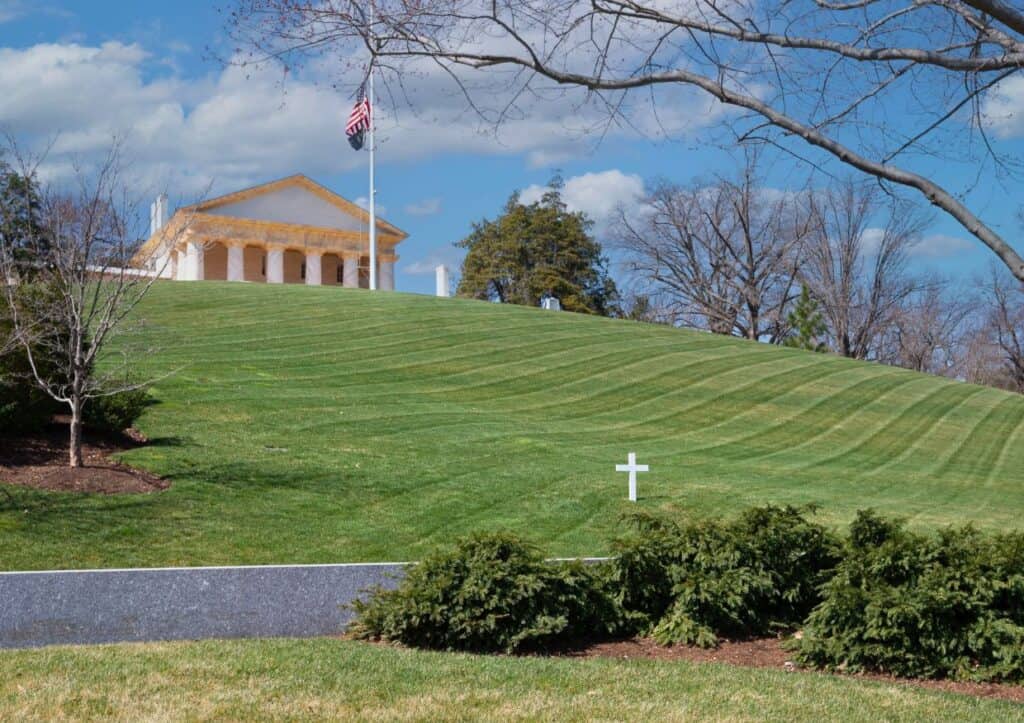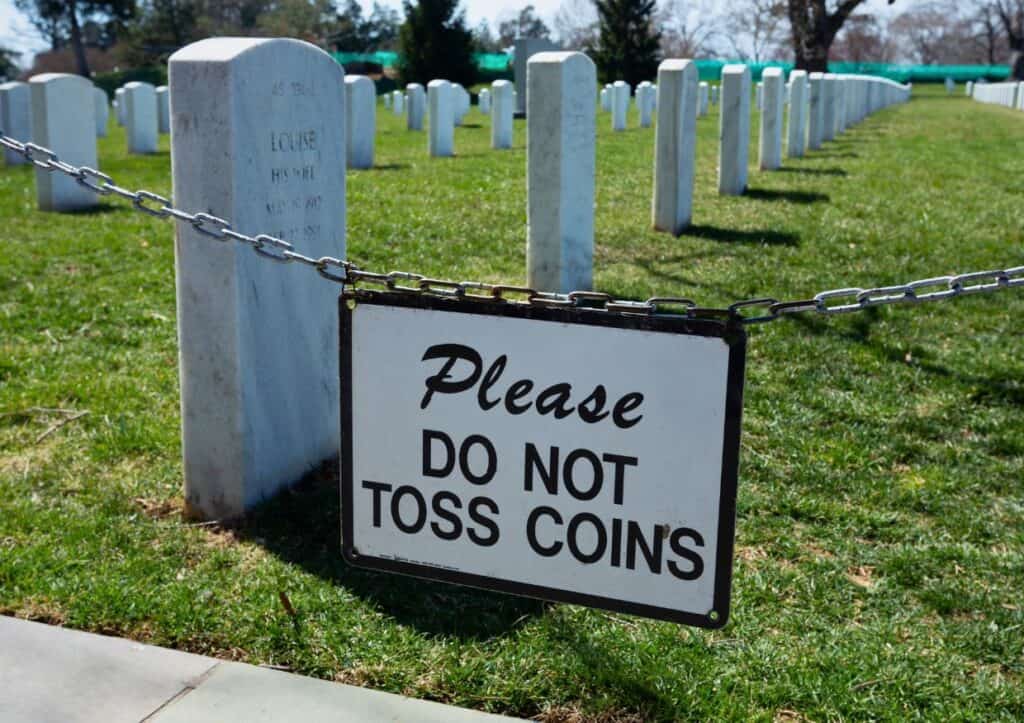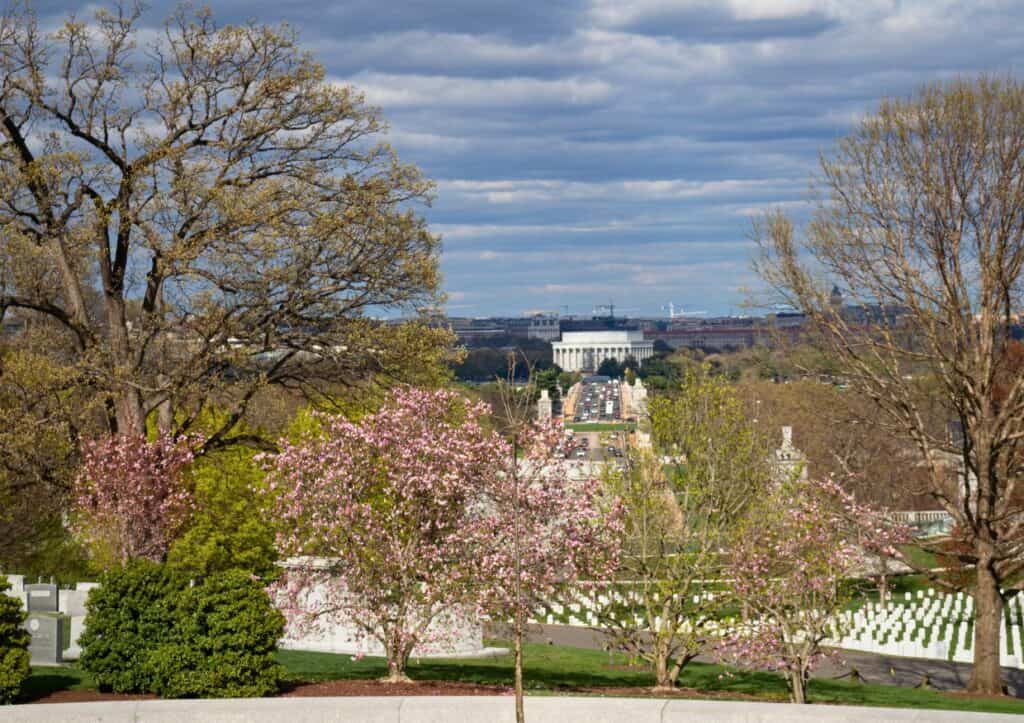Across the Potomac River from the nation’s capital, Arlington National Cemetery is the final resting place of more than 400,000 Americans who bravely served their country. These Arlington National Cemetery facts will make you see this hallowed ground in a new light.

When you think about Arlington National Cemetery, the eternal flame at JFK’s grave or the Tomb of the Unknown Soldier might come to mind. But laid to rest on the more than 600 acres of rolling green hills are soldiers from every major American war, Medal of Honor recipients, famous actors, notable Americans and their loved ones. These Arlington National Cemetery facts reveal the hidden stories and little-known details that make this sacred place a powerful testament to American history.

Arlington Cemetery was once a private estate
Before becoming a cemetery, the land that now houses Arlington National Cemetery was known as Arlington House. The estate was the home of Confederate General Robert E. Lee and his wife, Mary Anna Custis Lee, the great-granddaughter of Martha Washington.
The cemetery was created out of necessity during the Civil War
By 1864, America’s bloodiest war had overwhelmed existing cemeteries in Washington, D.C. Quartermaster General Montgomery C. Meigs, a Union officer, selected Arlington House as the site for a new military cemetery, partly as a symbolic gesture to ensure that the Lees could never return to their home. The first army burials at Arlington took place on May 13, 1864, forever changing the purpose of the estate.
Arlington National Cemetery spans over 600 acres
Covering 624 acres, Arlington National Cemetery is about the size of 472 American football fields. This vast expanse is home to over 400,000 graves, including veterans from every U.S. conflict. Each year, Arlington National Cemetery hosts two major remembrance ceremonies on Memorial Day and Veterans Day, where thousands gather to honor those who have served. These solemn events, often attended by the President, highlight the nation’s gratitude and respect for its military heroes.
JFK’s forever view was his final resting place
Just weeks before his assassination, President John F. Kennedy visited Arlington National Cemetery and remarked on its stunning views across the Potomac River. “I could stay here forever,” he mused while looking out at the Washington Monument and Lincoln Memorial. After his tragic death, Jacqueline Kennedy chose this spot for his burial, giving him that forever view he had admired. Today, millions visit the eternal flame that marks his grave, making it one of the most visited sites in the cemetery.
The Kennedy family plot is a family affair
JFK isn’t the only Kennedy at Arlington. His wife, Jackie, rests beside him, along with two of their children who died as infants — Arabella and Patrick. Nearby are the graves of his brothers, Bobby and Ted Kennedy. The family plot even includes a memorial cross for JFK’s oldest brother, Joe, who was killed in World War II but is buried in England.
Not one, but two presidents are buried at Arlington
While JFK’s grave is the most famous, he’s not the only president interred at Arlington. President William Howard Taft, who also served as Chief Justice of the United States, was buried there in 1930. Taft was the first president to be laid to rest at Arlington and remains the only person in history to have held the country’s highest judicial and executive offices.

Coins on graves aren’t just loose change
If you visit Arlington National Cemetery, you might notice coins left on some of the graves. According to an Arlington Cemetery guide, it’s a tradition dating back to the Vietnam War. Each coin has a specific meaning: a penny means you visited, a nickel indicates you trained with the deceased, a dime shows you served with them and a quarter signifies you were there when they died.
Arlington isn’t just for the military
While Arlington National Cemetery is primarily known for being the resting place of military personnel, it’s also the final home for others who shaped America. Notable non-military burials include Supreme Court Justices Thurgood Marshall and Ruth Bader Ginsburg, civil rights leader Medgar Evers and heavyweight boxing champion Joe Louis. These individuals, each in their own way, contributed to the fabric of American history.
A civilian hero is buried with full military honors
James Parks, born into slavery at what is now Arlington National Cemetery, is the only civilian buried there with full military honors. Parks dug many of the first graves at Arlington and served the cemetery for over 60 years. His life story is a remarkable journey from slavery to a position of deep respect and honor at one of the nation’s most hallowed sites.
The first Black four-star general is buried here
General Daniel “Chappie” James Jr., the first African American to achieve the rank of four-star general, is buried at Arlington. His groundbreaking career included combat missions in Korea and Vietnam and paved the way for future generations of African American military leaders. His grave is a powerful reminder of the progress made in the U.S. military.
Arlington’s radioactive grave
In a quiet section of Arlington, there lies a grave sealed with a lead-lined casket and concrete vault. It belongs to Richard Leroy McKinley, a victim of America’s first fatal nuclear accident. His grave is considered radioactive due to the contamination from the accident, making it one of the most unique and somber sites in the cemetery.
It’s a serene spot for viewing cherry blossoms
Although it’s known for its solemnity, Arlington is a surprisingly beautiful spot to see cherry blossoms in Washington, D.C., each spring, with delicate pink blossoms adding a layer of serene beauty to this hallowed ground. The trees, which typically bloom between mid-March and mid-April, offer a peaceful backdrop to the cemetery’s rolling hills and historic monuments.
Arlington National Cemetery tells America’s story
These Arlington National Cemetery facts offer a glimpse into this sacred place’s rich history and profound significance. Each grave, each plot of land, tells a story of bravery, sacrifice and the relentless pursuit of freedom. As you walk among the rows of white headstones, you’re not just visiting a cemetery — you’re walking through the history of a nation.
Sage Scott was bitten by the travel bug as a preschooler when her family moved abroad for the first time. Now settled in America’s Heartland, Sage is a travel writer, world wanderer and photographer whose favorite color is golden hour. Follow her adventures at Everyday Wanderer.
